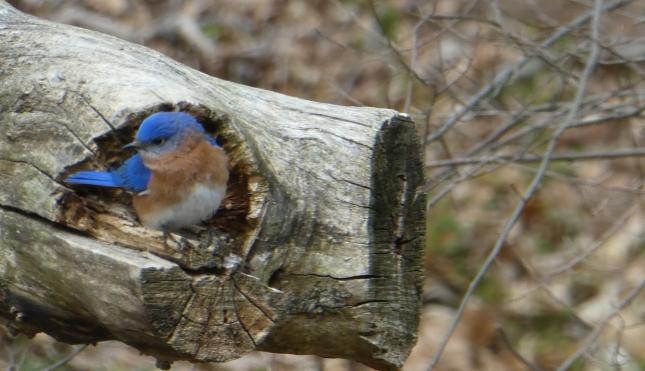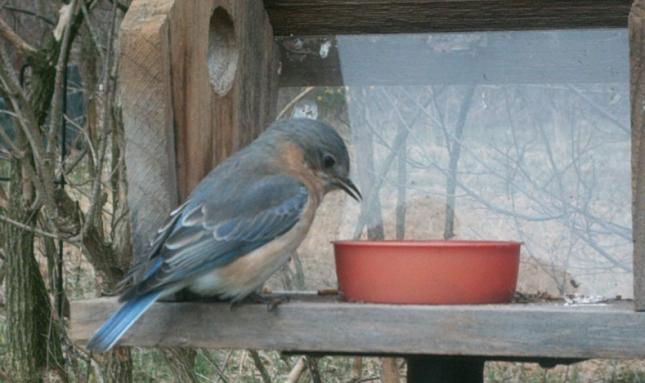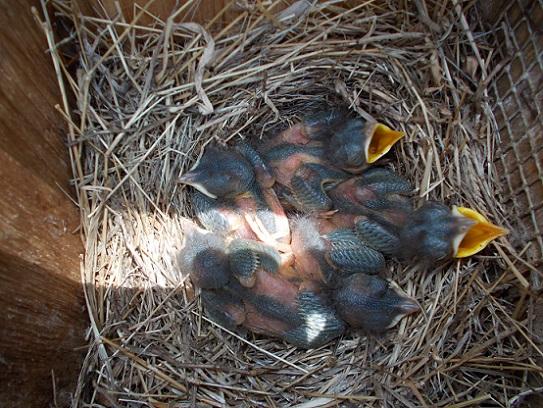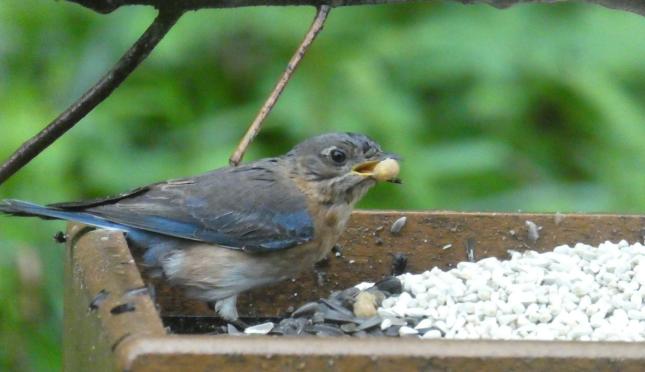All About Bluebirds
Bluebirds are one of the prettiest birds in any backyard, and lucky for us they’re becoming easier to see in the area!

For those of you who have had Bluebirds at your feeders this winter consider yourselves lucky. It was not long ago that Bluebirds were scarce if not non-existent in our area. The lack of habitat, competition from non-native species, and insecticides caused their decline. Through the efforts of Bluebird lovers and organizations installing birdhouses and setting up Bluebird Trails they have made an incredible comeback. In fact, they are doing so well they are starting to creep into areas that they did not previously inhabit. Each year we get numerous phone calls from customers saying they have lived in their house for 20 years and never had Bluebirds until now. Once you see a Bluebird in your yard, you truly know why they are called the Bluebirds of Happiness in poetry and song.
How to Tell Mr. Bluebird From Mrs. Bluebird
Bluebirds are named after their vibrant blue coloration, but did you know that their feathers are not actually blue? Their color comes from a certain prism structure in their feathers that reflects blue color when exposed to certain lighting. This is why they sometimes look gray at certain angles. Male bluebirds appear blue from their face, across the top of their head, all the way down their backs. They also have a rusty chest and light belly. Females are an elegant gray with blue wingtips and a lighter chest and belly than the male.
 < male
< male  < female
< female
Spring courtship of Bluebirds is delightful to observe. The male will warble his heart out to attract a female. Sometimes he will be atop a bird house or perched nearby a house singing for attention. If a female responds to his overtures, she might inspect the house by going in and out of the house repeatedly. You also might witness a courtship display called wing waving. The male will sit atop the nest box and flick a wing or two open.
A successful nesting of Bluebirds not only requires the partnership of birds but also a suitable nest box with an acceptable placement. The nest box should have a one and ½ inch opening. The box should also have ventilation, drainage, and be easy to open. The floor space is to be four by four inches. I tend to install bluebird boxes in an open area approximately 15 feet from any trees. This allows them to feed off insects in the lawn area and have a nearby perching site for either parent to watch over the house. It also gives the young a close place to land for their first flight. Bluebirds prefer this type of location as opposed to the middle of a large field or in the deep woods. Like other species, Bluebirds are territorial when nesting season happens. Bluebird houses require at least one hundred yards between houses. Just because you put up more houses, do not expect more bluebirds to nest, especially in a small yard. Other houses could relieve the pressure of other birds nesting in your yard as a bluebird house will also permit a Tree Swallow, House Sparrow, or a House Wren to nest. If you have a known issue with raccoons, you should install a raccoon baffle of your bluebird house pole. Raccoons will open a nest box, eat everything inside and cause your bluebirds much distress.
The female Bluebird will build a very tidy nest of all dried grass or pine needles. Bluebirds can have up to three nests per year and it may not always be in the same house as they started the season in. She can have between 3-6 eggs per clutch. The female will lay one egg per day but does not begin incubation until the last egg is laid. This ensures that all chicks will hatch on the same day. Incubation can be from 14-16 days, with fledging occurring in another 16-22 days.
It is okay to open the nest box during nesting season, you just have to know when. I have several bird houses on our fifteen acres and maintain the bluebird trails at Auburn State Park in Yorklyn. I perform weekly nest checks and keep records of those visits that I send to Nest Watch. Nest Watch is a citizen-science program run by Cornell Lab of Ornithology. By submitting data, they can tell how many fledglings per species, which locations work birds find suitable, and what types of boxes attract what birds each year. It does not hurt the birds to peek in for a brief moment to count eggs or chicks. Over the years my slight intrusion has shown me the wonders of nesting birds and I was able to help them if I saw issues I could address. I usually check nest boxes at mid day so as to not to disturb a female during egg laying. By keeping a record I know when the fledglings are almost ready to fly. For Bluebirds I peak into the box for the first 14 days after hatching. If I check afterwards there's a chance they could prematurely fly out.
We may feel that spring is just around the corner, but nesting season will not begin for a couple of weeks. If you have seen bluebirds at your feeders this winter, there is a good chance they will nest in your yard come spring. Stop in and we can show you which nest boxes and foods to feed the bluebirds and their families.

Feeding Bluebirds
The best way to attract Bluebirds to your yard is to put out a bird feeder full of their favorite foods! Bluebirds can’t crack the shell of most seeds, so you will want to offer soft foods or seeds that are shell-less. Here are a few of their favorites that you can try out in your yard:
-
Mealworms (live or dried, depending on your preference)
-
Sunflower Chips (either on their own or in a blend, like No-Mess)
-
Bark Butter Bits
-
Hot Pepper Seed Logs
-
Nuts and Berries Suet


